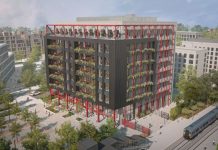
Property and construction professionals in Bristol and the South West remain optimistic about their prospects in 2017 with their confidence levels second only to those in London and the South East, according to a major report by accountancy, investment management and tax group Smith & Williamson.
The firm’s annual survey of senior executives in the property and construction sector, found the greatest levels of confidence in the residential arena, with almost three-quarters (74%) seeing housing as a compelling five year investment, a 10% rise on the previous year.
Paul Bray, a partner in Smith & Williamson’s property and construction team based in Bristol, outlined some of the possible reasons for the sector’s optimism. “Bristol has the second fastest growing economy outside of London and people are increasingly drawn to the city as well as the South West’s many other thriving commercial centres and beautiful countryside. This further strengthens demand for cost-effective housing with the availability and price of building land providing added incentives to developers, particularly when compared to London and the South East.”
Paul continued: “One possible threat to the housing market in Bristol and South Gloucestershire comes from South Wales where estate agents say the majority of recent house buyers in Chepstow and other parts of Monmouthshire are coming from the greater Bristol area, motivated in part by the prospect of lower commuting charges thanks to the halving of the Severn Bridge tolls in 2018. There are already new housing developments underway in these areas in anticipation of this growing demand.”
Smith & Williamson’s report shows that confidence also remains strong in commercial property, partly fuelled in the South West by works starting at Hinkley Point C. Mike Neale, partner and head of Smith & Williamson’s property and construction team in Bristol, said: “We know that these works will have a huge effect on the industry and bring new opportunities to many. However, it will be interesting to see how access to the single market and any freedom of movement restrictions post Brexit will impact contractors and sub-contractors, particularly those looking to Europe for labour.”
Planning was cited as the number one barrier to growth. A shortage of development land was highlighted as another ongoing challenge.
One area which isn’t being properly exploited but which could provide property and construction companies with a welcome boost to cash flow, is the ability to claim tax relief on research and development (R&D) expenditure. Smith & Williamson’s report reveals that not enough UK-based companies are taking advantage of the R&D tax credits available to them. Just 20% of survey respondents said they understood their entitlement and made regular claims. Over half (56%) said they were unsure which types of work qualify while almost a quarter (24%) said they were unaware of the scheme.
Paul Bray explained: “The problem is that many senior executives don’t consider their businesses to be innovative. In fact, there are a wide range of exciting developments taking place within the industry with off-site manufacturing, 3D building information modelling, advances in modular flat-pack homes and new energy-saving initiatives being among those highlighted in our report. There are significant opportunities for companies to save tax but the majority aren’t aware of them. HMRC has tried to simplify things for smaller businesses, typically with a turnover of less than £2m, by introducing an advance clearance system – but even this isn’t been fully exploited.”


















